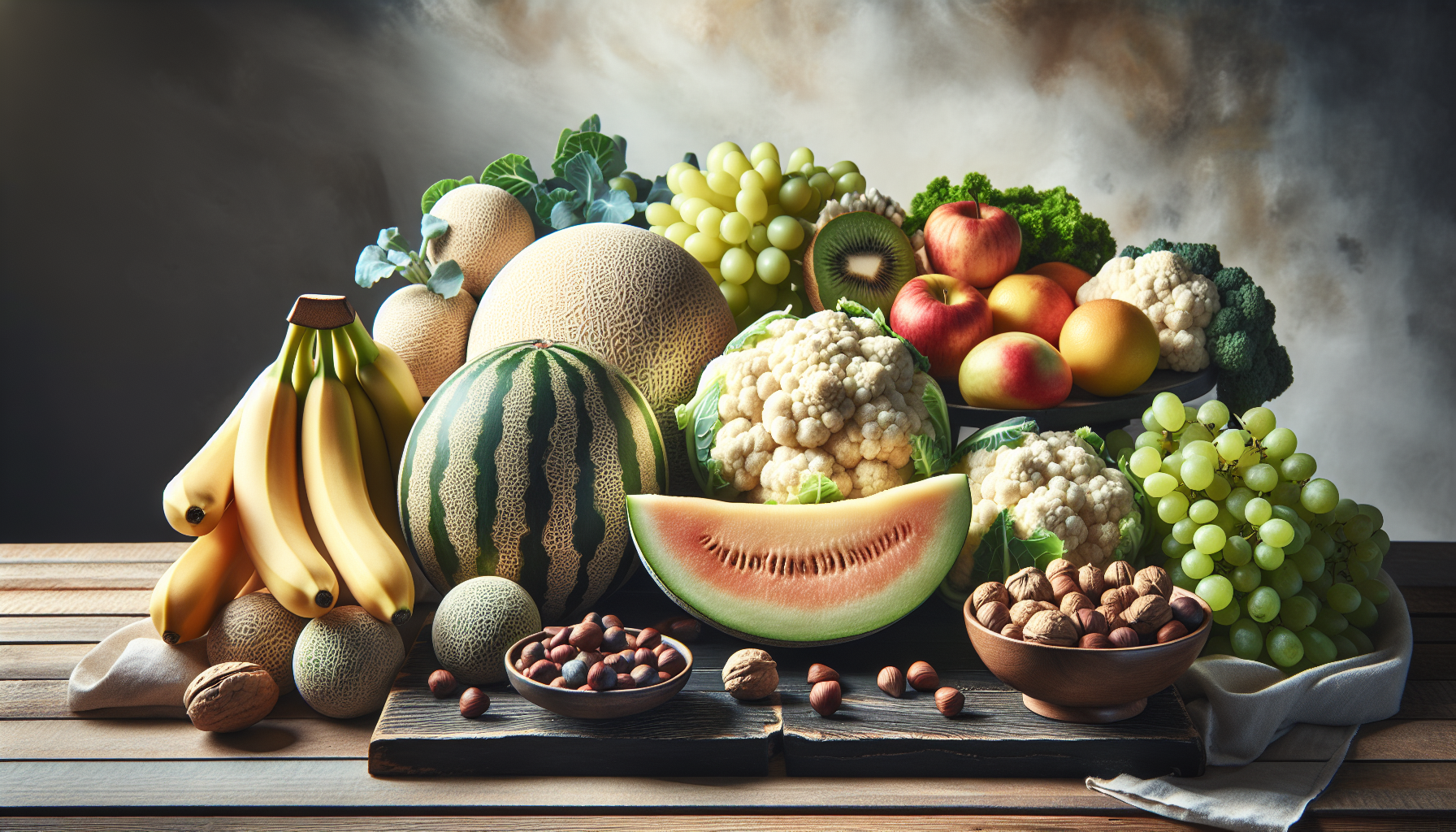Have you ever stopped to think about the food on your plate and how it can impact both your body and mind? Mindful eating is far more than just savouring your meals; it’s about being aware of what you’re consuming, recognizing its effects on your health, and making informed choices. When considering specific health issues, like oxalate levels, this awareness becomes even more essential.
What Are Oxalates?
You might be wondering what oxalates are and why they should concern you. Oxalates are naturally occurring compounds found in many foods. For some, they can form crystals that are associated with kidney stones and other health issues. By grasping the concept of oxalates — their sources and effects — you’ll be more informed on how to practice mindful eating in regard to them.
Sources of Oxalates
Understanding where oxalates come from helps you make intentional dietary choices. Foods high in oxalates can differ widely, ranging from vegetables to grains. Here’s a breakdown of common sources:
| Food Group | High Oxalate Foods |
|---|---|
| Vegetables | Spinach, rhubarb, beet greens |
| Nuts & Seeds | Almonds, cashews |
| Grains | Wheat bran, buckwheat |
| Fruits | Berries, oranges |
| Beans & Legumes | Soybeans, black beans |
| Other | Chocolate, tea |
By knowing these sources, you can start to monitor your own intake and determine if you need to make adjustments.
Why Oxalate Awareness is Important
It’s not just about avoiding foods high in oxalates. You need to understand how your body reacts to these compounds and how they fit into your overall diet. Increased oxalate levels can lead to health issues, particularly for those prone to kidney stones. Developing an awareness of your limits can profoundly impact your well-being.
Individual Sensitivity
You might be surprised that not everyone reacts to oxalates in the same way. Some people can consume high-oxalate foods without any issues, while others may experience problems even with small amounts. This variability means that tuning into how your body feels is crucial. Have you noticed any discomfort or specific symptoms after eating certain foods?
What is Mindful Eating?
Practicing mindful eating goes beyond being cautious about oxalate intake. It’s about slowing down, savoring each bite, and being fully present during meals. This practice not only enhances your enjoyment of food but also helps you listen to your body’s cues, which is vital for making informed dietary choices.
How to Practice Mindful Eating
To cultivate mindful eating habits, try to incorporate the following techniques into your daily routine:
- Eliminate Distractions: Put away your phone and turn off the TV. Focus solely on your meal.
- Savor Each Bite: Chew slowly and pay attention to the flavors and textures.
- Listen to Your Body: Check in with yourself. Are you still hungry? Are you full?
- Acknowledge Your Food: Consider where it came from and the journey it took to get to your plate.
By adopting these habits, you’ll not only enjoy your food more but also become more conscious of how it affects your health, including oxalate levels.
Pairing Foods for Oxalate Management
Mindful eating isn’t just about the act of eating; it also involves what you put on your plate. Pairing certain foods can help mitigate the effects of oxalates. Some foods can actually inhibit oxalate absorption, making them beneficial companions for high-oxalate foods.
Helpful Pairings to Consider
Here are some food pairings that could help you manage oxalate levels:
| High Oxalate Food | Recommended Low Oxalate Food |
|---|---|
| Spinach | Cooked beef or chicken |
| Almonds | Yogurt or cheese |
| Dark chocolate | Milk or a dairy-based dessert |
| Beets | Potatoes (without the skin) |
| Rhubarb | Rice |
This way, you can still enjoy a variety of foods while being mindful of oxalate levels.
Hydration and Oxalate Levels
Did you know that hydration plays a significant role in oxalate management? Drinking enough water can help dilute oxalates in your urine, reducing the risk of kidney stone formation.
How Much Water Should You Drink?
There’s no one-size-fits-all answer for hydration, but a general guideline is to aim for about 8 to 10 cups of water daily. If you’ve been active or are experiencing hotter weather, you’ll want to increase this. A simple way to check your hydration status? Look at the color of your urine. Pale yellow usually means you’re well-hydrated.
Infusing Flavor for Better Hydration
If plain water isn’t appealing, consider infusing it with fruits or herbs. Adding slices of lemon, cucumber, or mint can make hydration a lot more enjoyable.
Recognizing Symptoms of Oxalate Overload
You should also be on the lookout for symptoms that may indicate you’ve consumed too many oxalates. Recognizing these signs early can help you adjust your diet and potentially prevent health issues down the line.
Common Symptoms to Watch For
- Kidney Pain: Sharp pain in the side or back can indicate kidney stones.
- Frequent Urination: Increased trips to the bathroom could be a sign of kidney irritation.
- Blood in Urine: If you notice this, it’s essential to seek medical advice.
- Nausea or Vomiting: Stomach upset after eating may occur with certain foods.
If you experience any of these symptoms regularly, consider discussing your diet and oxalate consumption with a healthcare professional.
Incorporating Variety into Your Diet
While managing oxalate levels is important, it’s equally vital to maintain a varied and balanced diet. Limiting yourself to only low-oxalate foods might feel restrictive, and you may miss out on the benefits of other nutritious foods.
Finding Balance
Think about how to incorporate a mix of foods while keeping oxalate levels in check. You can do this by:
- Rotating Foods: Instead of completely eliminating high-oxalate foods, try rotating them with low-oxalate options.
- Using Cooking Methods: Boiling can reduce oxalate levels in some vegetables. Have you tried cooking broccoli instead of eating it raw?
- Paying Attention to Portion Sizes: Enjoy your favorite high-oxalate foods in moderation. A small serving might not cause any issues, especially when balanced with lower-oxalate foods.
Simple Recipes for Mindful Eating
Now that you know the ins and outs of oxalates and mindful eating, here are a couple of simple recipes that fit these principles perfectly.
Grilled Chicken Salad with Spinach and Quinoa
This refreshing salad brings together lean protein, nutrient-rich quinoa, and flavorful vegetables.
Ingredients:
- 1 grilled chicken breast, sliced
- 2 cups baby spinach (lightly cooked to lower oxalate content)
- 1/2 cup cooked quinoa
- 1/4 cup cherry tomatoes, halved
- 1/4 cucumber, diced
- Olive oil, lemon juice, salt, and pepper to taste
Instructions:
- Start by grilling your chicken breast. Once cooked, let it rest before slicing.
- In a bowl, combine the spinach, cooked quinoa, cherry tomatoes, and cucumber.
- Top with the grilled chicken.
- Drizzle with olive oil and lemon juice before seasoning with salt and pepper.
Berry Chia Seed Pudding
This delicious, fiber-packed pudding is a great way to enjoy berries while keeping your oxalate levels in check.
Ingredients:
- 1 cup coconut milk
- 1/4 cup chia seeds
- 1/2 cup mixed berries (blueberries, strawberries – lower in oxalate)
- 1 tablespoon honey or maple syrup (optional)
Instructions:
- In a bowl, combine coconut milk and chia seeds. Stir well to avoid clumps.
- If you’re using honey or syrup, add it to the mixture and stir again.
- Cover and refrigerate for at least 4 hours or overnight until it thickens.
- Before serving, top with your mixed berries.

The Role of Professional Guidance
If you’re feeling overwhelmed by managing oxalate levels in your diet, remember that seeking help can be a game-changer. A nutritionist or dietitian can provide personalized advice tailored to your specific needs.
When to Consult a Healthcare Professional
- Persistent Symptoms: If you experience ongoing issues with pain, frequent urination, or gastrointestinal discomfort.
- Diet Changes: Before making significant changes to your diet, especially if you have existing health concerns like kidney stones.
- Nutritional Understanding: If you want to deepen your understanding of oxalates and how they fit into your overall dietary needs.
A professional can guide you through your dietary journey, making it easier to maintain a mindful eating approach while managing oxalate levels effectively.
Summary: Your Journey to Mindful Eating
Moving forward, it’s all about creating a balance between enjoying your meals and being mindful of what they contain. Mindful eating and oxalate awareness go hand in hand.
Reflect on how your body feels after specific meals, stay hydrated, and make informed choices without feeling deprived of the foods you love. By adopting these practices, you’ll not only support your health but also cultivate a positive relationship with food.
So, how are you going to apply these insights into your daily life and meals? The journey of mindful eating is deeply personal, but with awareness and intention, you can navigate it successfully, creating an enjoyable and health-conscious experience.





